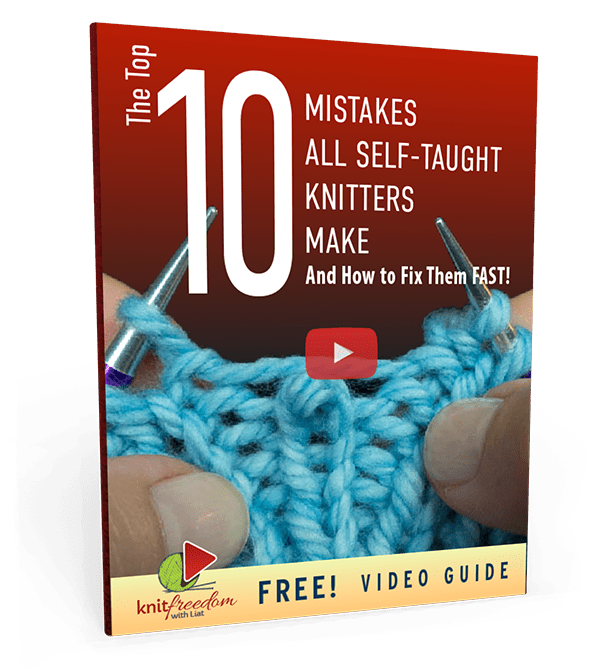Mastering Magic Loop
The “One Stitch Left” Challenge

Here is one last challenge for you. I want you to be incredibly comfortable with moving stitches around on Magic Loop, and using the technique so that it works for you in any situation.
What do you do when the stitches aren’t divided on your needle the way you need them to be? Move them. Here’s how. And to help you follow along, below the video is the challenge written in pattern-speak.
Restricted Video
 This video is available to members of Knitting Superstar University or the following classes:
This video is available to members of Knitting Superstar University or the following classes:
If you own this class, please LOG IN to watch.
“One-Stitch Left” Swatch – Pattern Instructions
CO 20 sts. Divide in half and join in the round using Magic Loop.
Rnds 1-2: K.
Rnd 3: K9, K2tog, K8, K2tog (18 sts).
Rnd 4: work even.
Rnd 5: K8, K2tog, K7, K2tog (16 sts).
Well done! Now it’s time to practice. The following basic hat pattern will get you very comfortable, and you’ll also learn a bonus technique called the “Traveling Loop” method.
Basic Magic Loop Hat Pattern




Download the Basic Slouchy Hat for Magic Loop pattern here.
Time to practice your skills! Knit this basic Magic Loop hat in any fun, soft yarn you can find. Go wild with colors!
This hat can be made more fitted or more slouchy, depending on how long you knit after the cast-on. It’s up to you.
The pattern calls for worsted-weight yarn and size 7 circular needles at least 40 inches long – be sure to check your gauge (in the round, of course) before you start.
Bonus Video: Traveling Loop

The Traveling Loop method is a cool way of using one loop of cable when knitting a large-ish diameter project, like a hat or small sweater.
Restricted Video
 This video is available to members of Knitting Superstar University or the following classes:
This video is available to members of Knitting Superstar University or the following classes:
If you own this class, please LOG IN to watch.
I usually start out using normal Magic Loop, then switch to using one loop after I increase to the widest diameter of the hat (here, 100 stitches), and then switch back to using two loops when I start to decrease.

